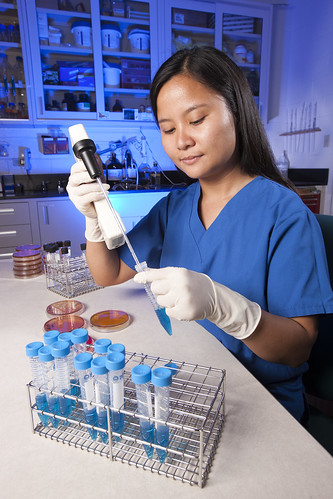
At USDA, we use a One Health approach that embraces the idea that problems arising at the intersection of the health of humans, animals, and the environment can be solved only through a coordinated multidisciplinary approach. This approach embraces the idea that a disease problem impacting the health of humans, animals, and the environment only can be solved through improved communication, cooperation, and collaboration across disciplines and institutions.
Because the One Health work that we do spans across many USDA agencies, we are launching a centralized web portal page to better help our stakeholders and the public better access our information. This page features USDA’s collective body of work on antimicrobial resistance (AMR), avian influenza and swine influenza as well as other One Health resources.
Using this collaborative approach, USDA, with its partners, seeks to maintain or reduce health risks to animals, humans, the environment and society. USDA has gained in-depth knowledge about, for example, zoonotic diseases (diseases that can move from animals to people or people to animals) and conditions such as AMR through its work on the agricultural production environment, animal health and food safety. Pathogens (disease causing organisms) can evolve and move from one organism to another and through the environment. Sometimes they mutate or evolve into more virulent strains, and sometimes they evolve to resist countermeasures such as the application of antibiotics. Investment in understanding the ecology of pathogens is necessary to develop strategies to address them.
Within USDA, the Animal and Plant Health Inspection Service, Agricultural Marketing Service, Agricultural Research Service, Economic Research Service, Food Safety and Inspection Service, Foreign Agricultural Service, National Agricultural Statistics Service and National Institutes of Food and Agriculture are all actively engaged in ongoing projects to better understand these and other complex issues at the animal, human and ecosystem interface.
USDA also partners with other U.S. government agencies – such as the U.S. Fish and Wildlife Service, U.S. Food and Drug Administration (FDA), the Centers for Disease Control and Prevention (CDC), the National Institutes of Health (NIH), the Environmental Protection Agency, and tribal Nations – to prevent and control problems that affect animal and plant health, human health and the environment. USDA emphasizes increased collaboration with other agencies to leverage infrastructures overseas to provide training and technical assistance on One Health issues.
USDA serves the nation through its commitment to producing wholesome and nutritious foods, preserving the safety of meat, poultry and egg products entering our country, through inspection services, and preserving the health, welfare and humane treatment of food animals while ensuring the health and safety of humans through our One Health partnerships.
